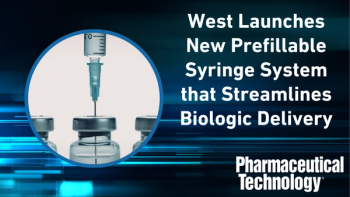
PTSM: Pharmaceutical Technology Sourcing and Management
- PTSM: Pharmaceutical Technology Sourcing and Management-03-30-2007
- Volume 3
- Issue 3
How to Improve Operational Excellence at API Sites
Improving performance at an active pharmaceutical ingredient manufacturing plant involves an integrated approach that incorporates methods for optimizing total production management, quality control and assurance, and inventory management. The authors analyze results from a recent benchmarking study to evaluate the critical success factors in high-performing API manufacturing plants.
While the market for active pharmaceutical ingredients (APIs) has been highly profitable, it faces key challenges. Increasing regulatory forces, the stronger bargaining power of buyers, rising costs, low-cost competition from Asian suppliers, delayed drug approvals, and drug failures are creating challenges for research-driven pharmaceutical companies, generic drug firms, and contract manufacturers. These changes require more than just compliance with specifications. Process understanding is the key to moving from corrective actions to more efficient continuous improvements.
Operational excellence (OPEX) model
To address thee changes, we developed a reference model (OPEX) to effectively implement the modern principles of operational excellence. This reference model was developed by analyzing current integrated production systems from the automotive industry and adapting them to the pharmaceutical industry. The OPEX model consists of three parts: total productive maintenance (TPM), total quality management (TQM), and just-in-time (JIT) inventories.
The main objective of the TPM system is to provide efficient management of fixed assets and to effectively use new process technologies. The goal of the TQM system is to significantly increase quality performance (e.g., reduce variability, scrap rates, and complaint rates). And JIT focuses on reducing working capital by simultaneously increasing service levels. In the OPEX model, the management system has to support all activities supporting operational excellence. Only by coordinating all these elements (TPM, TQM, and JIT) can an API manufacturing site reach top performance.
Benchmarking API manufacturing plants
Twenty-one API plants were benchmarked using the OPEX model (see Figure 1). The average site from the sample operated with 150 employees and had costs of goods sold of EUR 107.5 million. The average of the three highest and lowest performing sites of each category was compared to evaluate areas for improved performance and potential cost-savings.
Figure 1: Twenty-one active pharmaceutical ingredient plants were analyzed using an operational excellence (OPEX) model.
Savings potential from TPM. All of the API sites analyzed seem to struggle with maintenance and asset utilization (see Figure 2). Low-performing sites with a smaller overall equipment effectiveness (OEE) had an overproportional level of unplanned maintenance. Consequently, the maintenance cost-per-volume dependent (v.d.) employees and the total number of maintenance employees rises significantly if the API site struggles in unplanned maintenance and in OEE. Discussions with benchmarking partners revealed that a strong OEE focus can be attributed to high-technology equipment. In addition, product mix (single product versus multipurpose production) seems to be directly linked to the OEE.
Figure 2: Savings potential in total productive maintenance.
Cost savings from quality assurance and control. Quality assurance and control is a second area for potential savings (see Figure 3). API sites face a trade-off between low customer complaint rates and low rates of rejected batches. This fact was observed in prior studies and reveals how crucial process understanding is for sustainable improvements. Low-performing sites had more than double the ratio of quality assurance and control costs/total costs than high-performing sites. And low-performing sites were unable to reach the outcomes of high-performing sites.
Figure 3: Savings potential from quality-assurance (QA) and quality- control (QC) costs.
The study showed that the total number of employees is not directly correlated with results in quality assurance and control. Quality cannot be inspected into a product. In contrast, built-in quality, which is a process improvement, leads directly to lower scrap rates. Consequently, costs are decreasing, and value is being added.
Cost savings from inventory management. The costs of inventories were related to the performance of an API site (see Figure 4). There was an alarming discrepancy between the three top-performing and low-performing sites in average changeover time. While there was a narrow performance gap among the top- and low-performing sites at the rate of raw-material turns, the performance gap at finished-good turns was very significant. The study showed that there is great room for improvement in volume flexibility for low-performing sites. Service level, however, was excellent throughout the whole sample.
Figure 4: Savings potential from just-in-time inventories.
The study also showed that key performance indicators (KPIs) at API plants either were missing or not clearly defined. Only by implementing operational excellence initiatives and controlling them through KPIs can API sites be prepared for the challenges facing API manufacturers. If the culture and management, however, does not support these improvement activities, even the best initiatives will fail.
Looking forward
In addition to this benchmarking study for the pharmaceutical and API industries, the understanding of operations in pharmaceuticals may be deepened by several research and industry projects such as implementing customized integrated productions systems for pharmaceutical plants. Experiences of other industries and discussions with site leaders show that implementing only single tools such as Six Sigma and total productive maintenance does not lead to sustainable success. Integrated production systems and the interdependencies of key performance indicators are crucial success factors. These lessons are important for Western pharmaceutical companies in reaching operational excellence and achieving future competitive advantage.
Thomas Friedli, PhD, is a professor, and Thomas Gronauer* and Daniel Tykal are research associates, Institute of Technology Management at the University of St. Gallen, Dufourstrasse 40a I CH-9000 St. Gallen, Switzerland, tel. +41(0)71 224 7269 ; fax +41(0)71 224 7311,
Articles in this issue
almost 19 years ago
Agreements and contractsalmost 19 years ago
Pfizer Restructuring a Boon to CMOs and CROsalmost 19 years ago
Mergers, acquisitions, and restructuringalmost 19 years ago
Peoplealmost 19 years ago
ExpansionsNewsletter
Get the essential updates shaping the future of pharma manufacturing and compliance—subscribe today to Pharmaceutical Technology and never miss a breakthrough.




